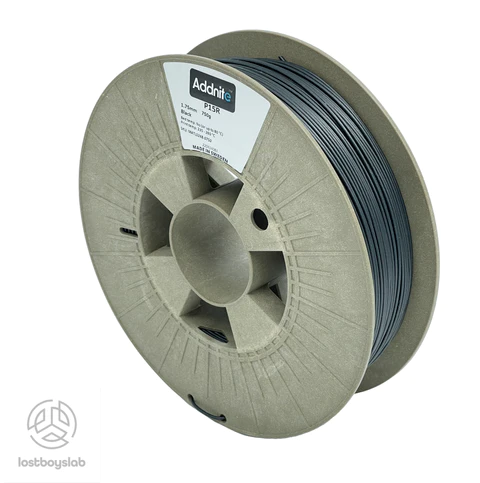larger or smaller screen please...
TRUSTED BY










3D Production
The Largest 3D Print Farm in scandinavia
- Operates over 120 industrial 3D printers, laser cutting and engraving.
- Specialized in rapid prototyping, end-use parts, and high volume 3D manufacturing — from single units to full production batches
Fast turnaround times – from idea to finished product in days
CONTACT US FOR MORE INFORMATION
- 📩 Contact Stephanie Wretman
Head of Production Sweden
📧 stephanie@lostboyslab.com
📩 Contact Mark H.
Head of Production USA
📧 Mark@lostboyslab.com
contact us
DESIGN FOR ADDITIVE MANUFACTURING
- We specialize in AM-ready 3D design, tailored for functional parts, end-use products, and prototypes.
- From early concept sketches to production-ready CAD models
3D design
Print Smart. Leave No Footprint.
The Largest Additive Farm in Scandinavia
Our fleet of over 120 printers enables parallel production at unmatched speed and flexibility. From small batches to serial runs, jobs are distributed across optimized clusters managed through SimplyPrint Cloud.
Real-time data, predictive maintenance, and automated job queuing ensure every machine runs at peak performance — 24/7.→ Output at scale. Consistency at every layer.
This is not just printing — it’s verified, intelligent, and carbon-neutral production.
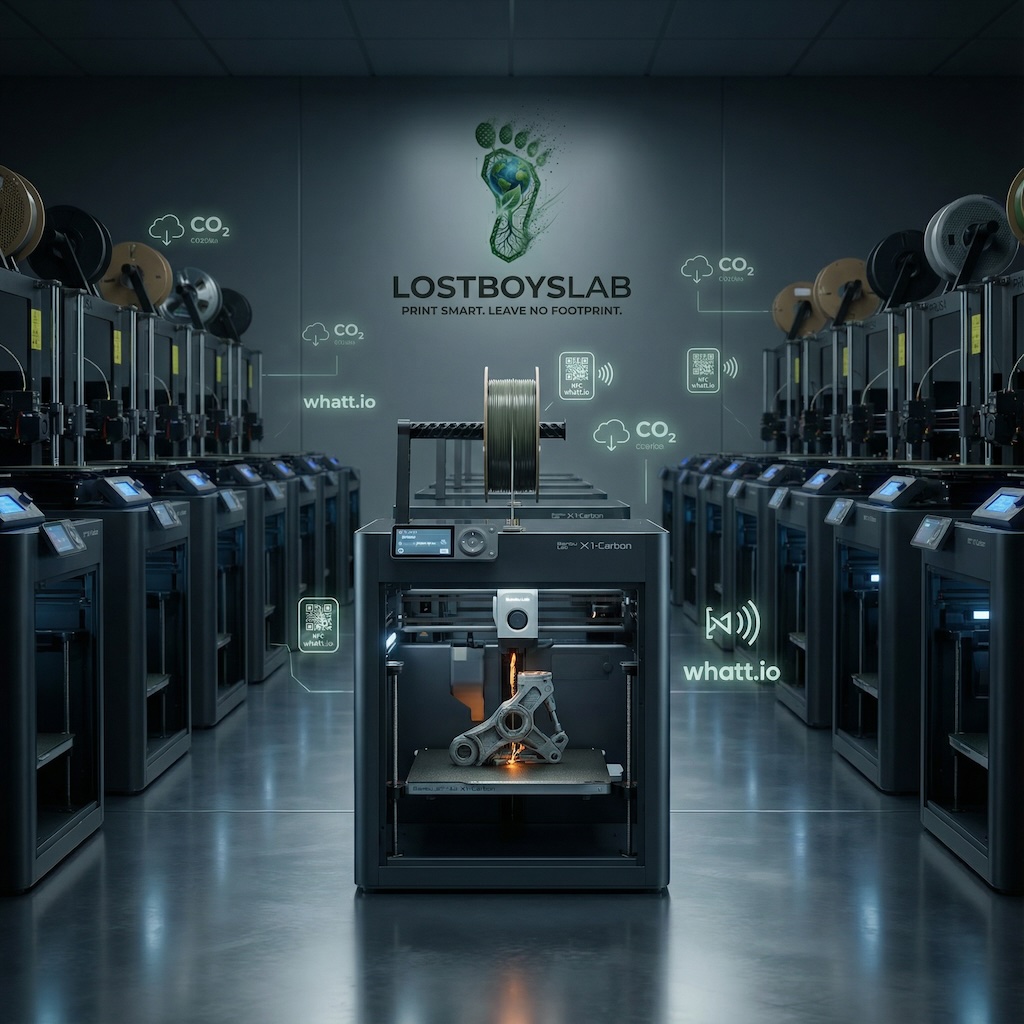
Laser-Enhanced Manufacturing
Beyond polymer printing, our precision laser system enables the embedding of materials and surface texturing directly into printed parts — combining aesthetic design and functional integration.
This technology bridges mechanical performance, identity, and customization, allowing each product to carry both a story and a signature.
→ Where additive meets advanced engineering.
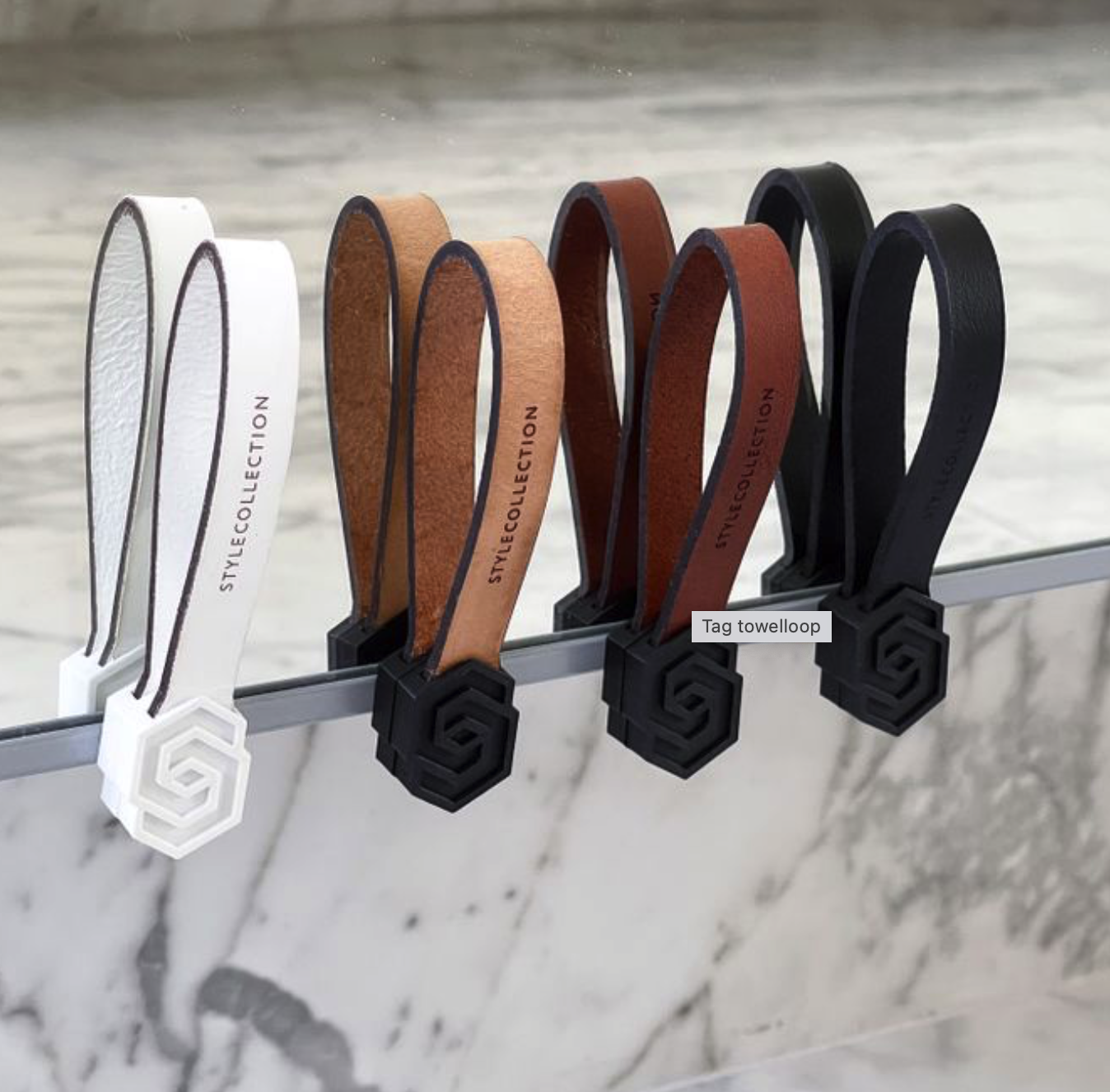
Traceable, Measurable, Transparent
Every print job is part of a closed-loop material and data cycle.
We recycle rPLA, rPETG, and Addnite together with our partners, with every spool, printer, container and shelf digitally registered and tracked via NFC tags.
CO₂ emissions are automatically calculated, aggregated, and stored in the whatt.io Cloud, giving each product a verified environmental footprint.→ Transparency by design — sustainability you can measure.

Data-Driven by Design
Lostboyslab’s Autonom Fabrik is the future of manufacturing — prepared for data driven EPCIS event and process recordings for ISO 9001, ISO 14001, and Digital Product Passport (DPP) compliance.
AI agents monitor temperature, humidity, and machine performance through Incendo devices and camera-based quality control incl tracing events through production
All production events are streamed live to whatt.io for real-time traceability and compliance evidence.
→ A factory that learns, adapts, and documents itself.
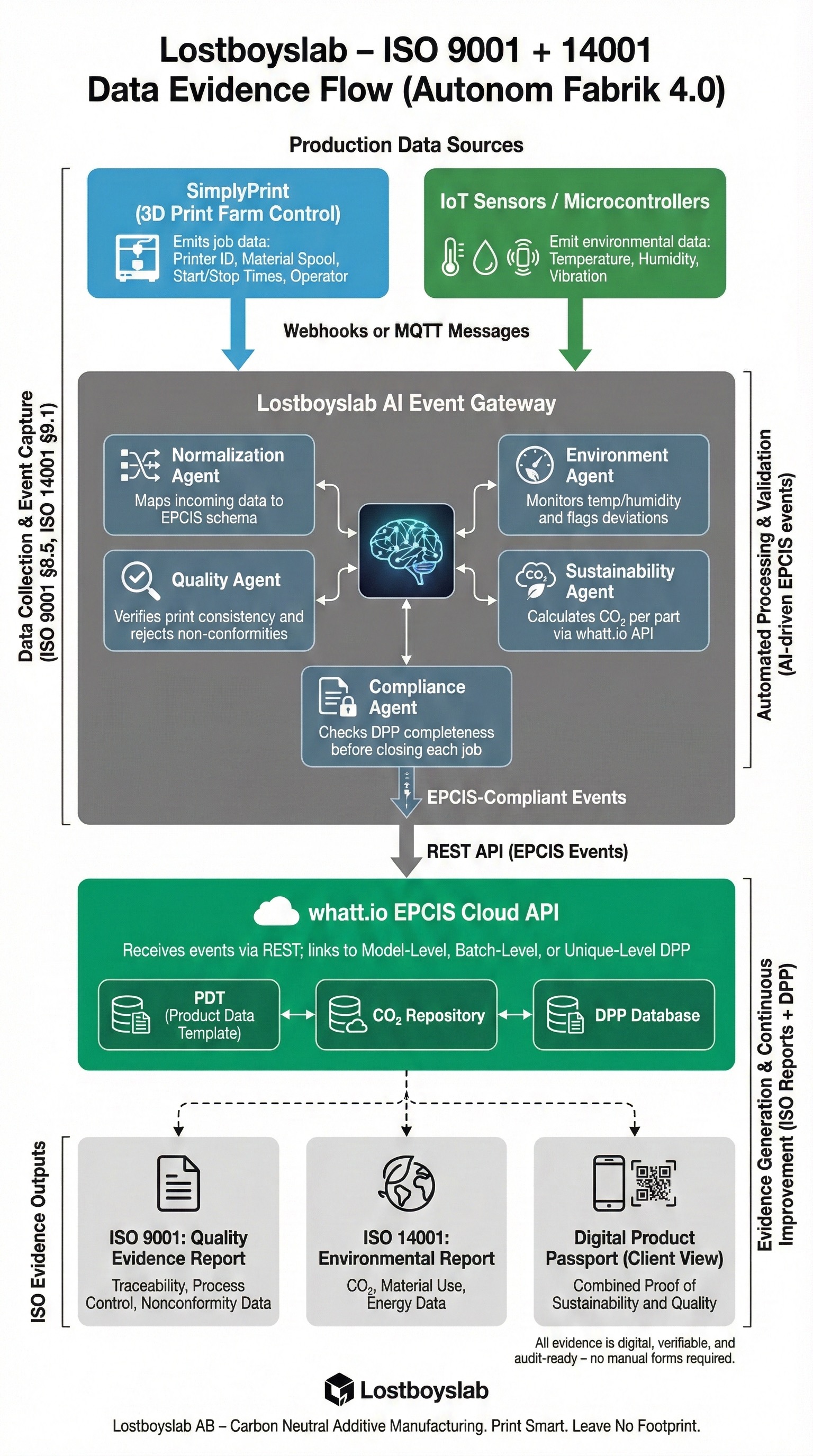
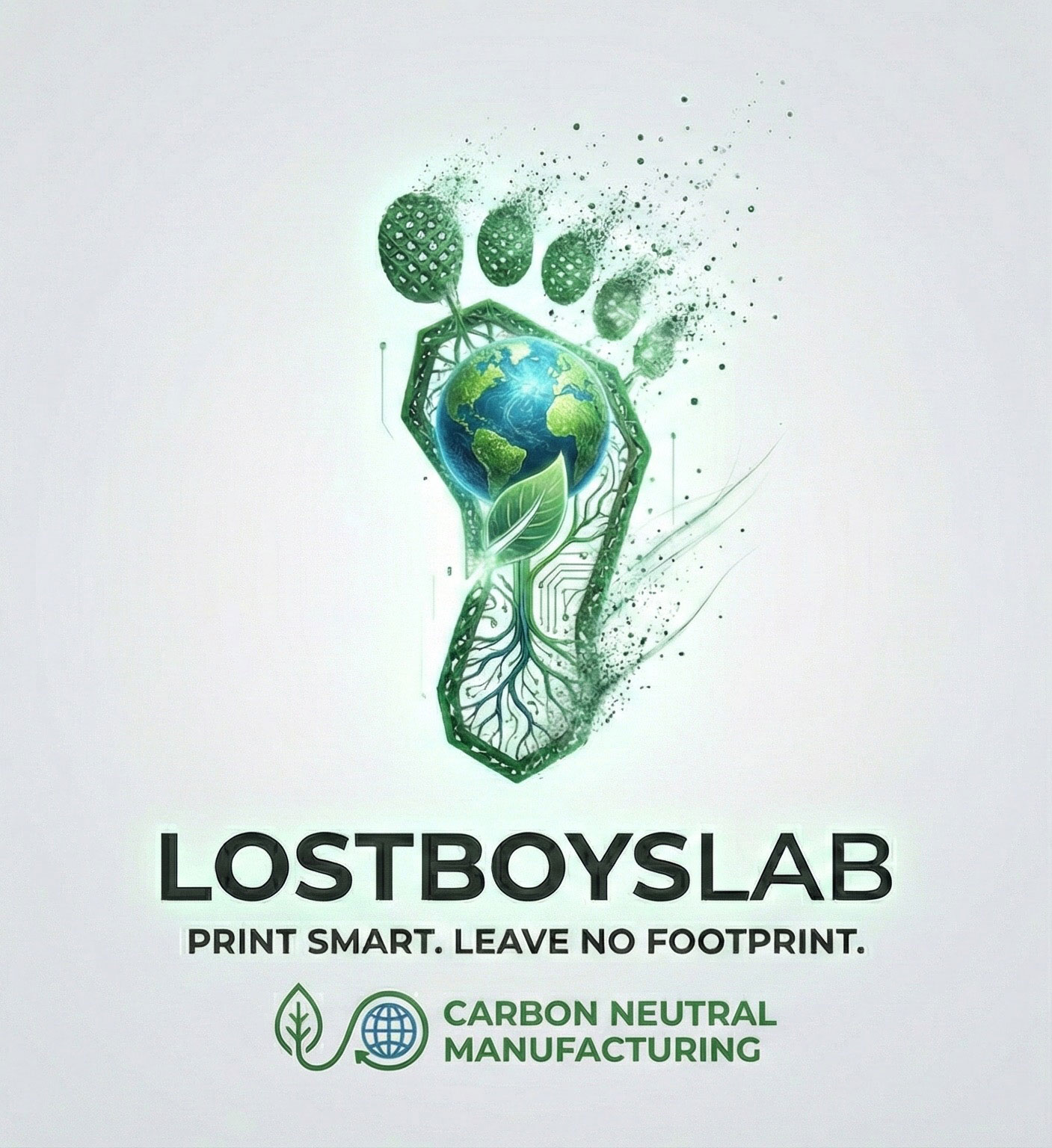
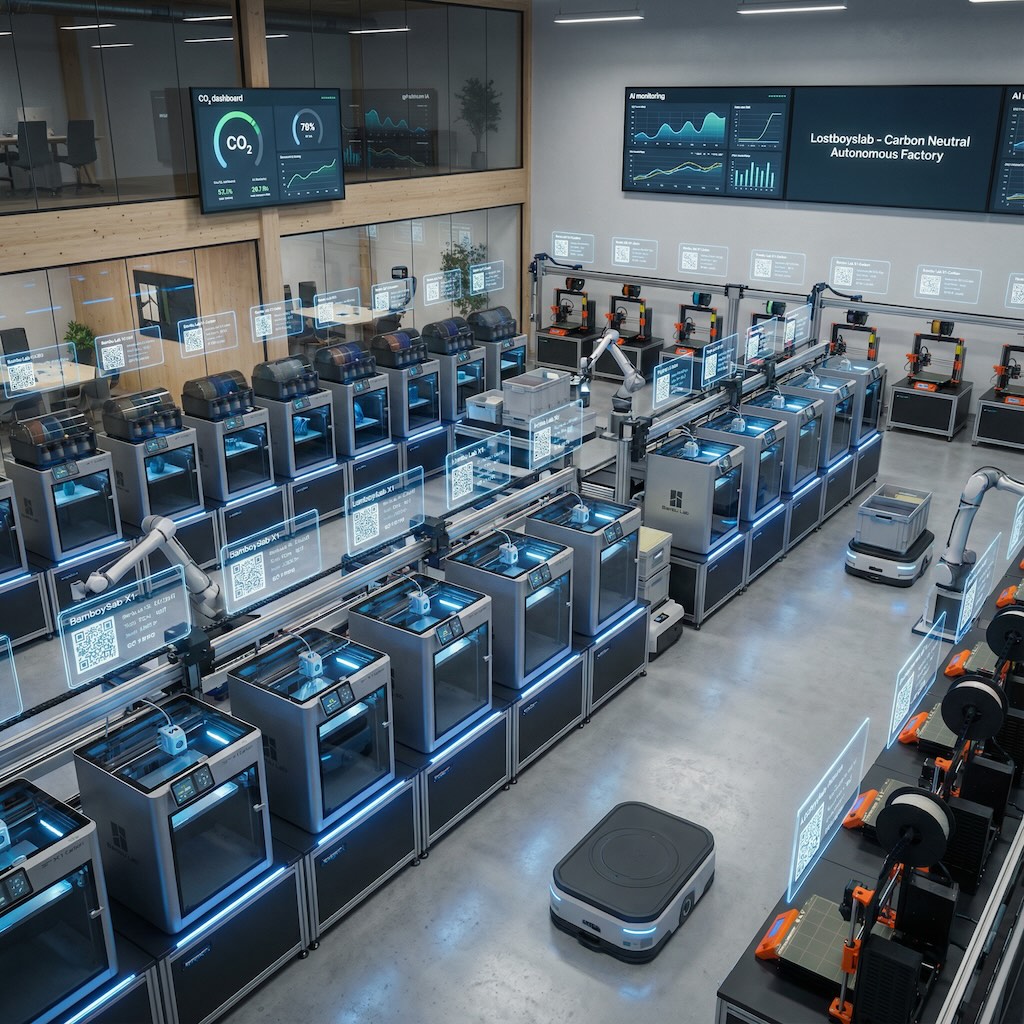
design studio
From physical to digital — fast, accurate, and ready for production.
We use advanced 3D scanning and AI-assisted modeling to capture, analyze, and recreate physical objects with sub-millimeter accuracy. Our scanners project structured light or laser patterns to generate detailed 3D meshes — creating precise digital twins ready for design, modification, or production. This technology allows us to reverse engineer discontinued parts, optimize products for additive manufacturing, or generate 3D models through AI reconstruction — even when original CAD files don’t exist. Whether restoring a prototype, redesigning an existing product, or creating new digital assets, our 3D scanning workflow bridges the gap between physical reality and digital innovation.
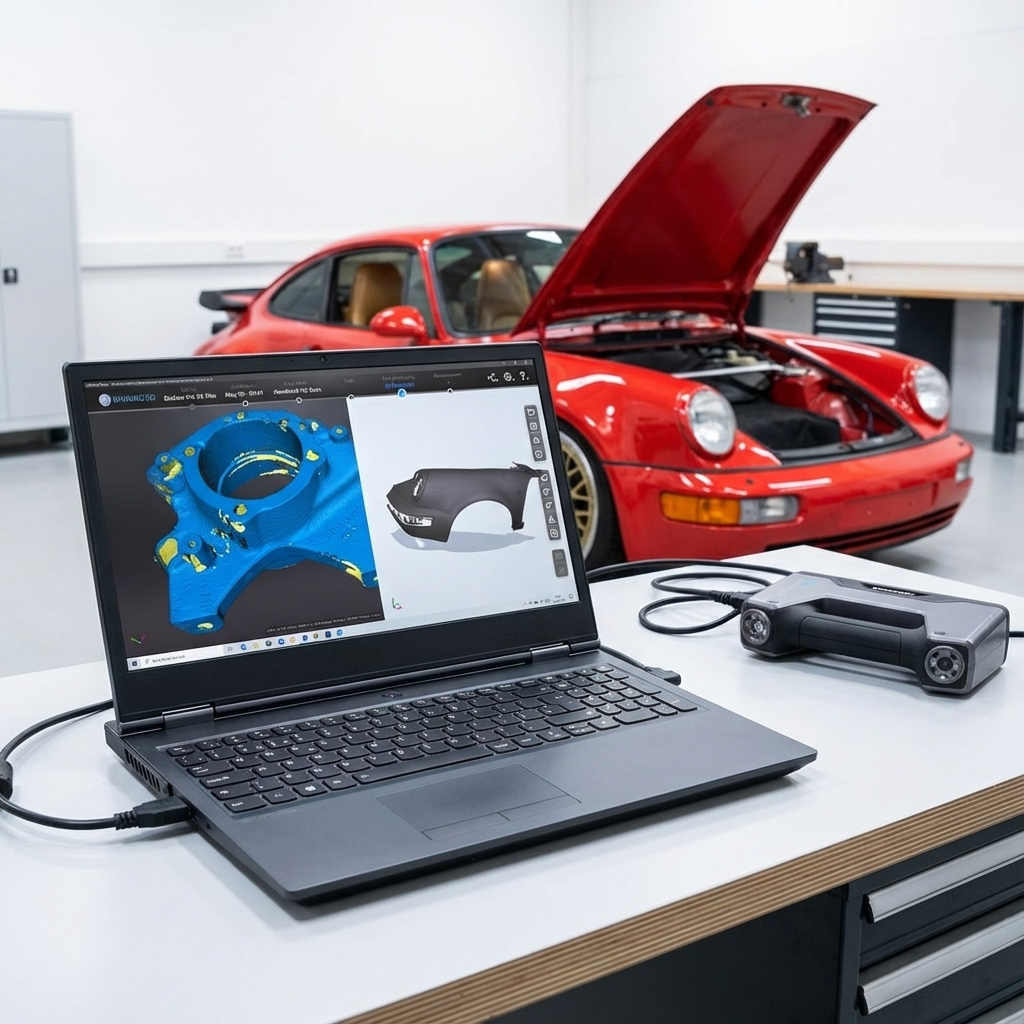
Design for Additive Manufacturing (DfAM)
Smart design for circular, on-demand production. At Lostboyslab, we design products built for 3D printing from the ground up — not adapted afterward. Using advanced CAD tools like Fusion 360, simulation, and generative workflows, we create designs that fully leverage the strengths of additive manufacturing: lightweight structures, minimal waste, and high functional performance. Our design process considers every detail — orientation, layer strategy, support efficiency, and material behavior — ensuring optimized production in recycled materials such as rPLA, rPETG, and Addnite.
The result: smarter, stronger, and more sustainable products, ready for digital manufacturing in our microfactories.
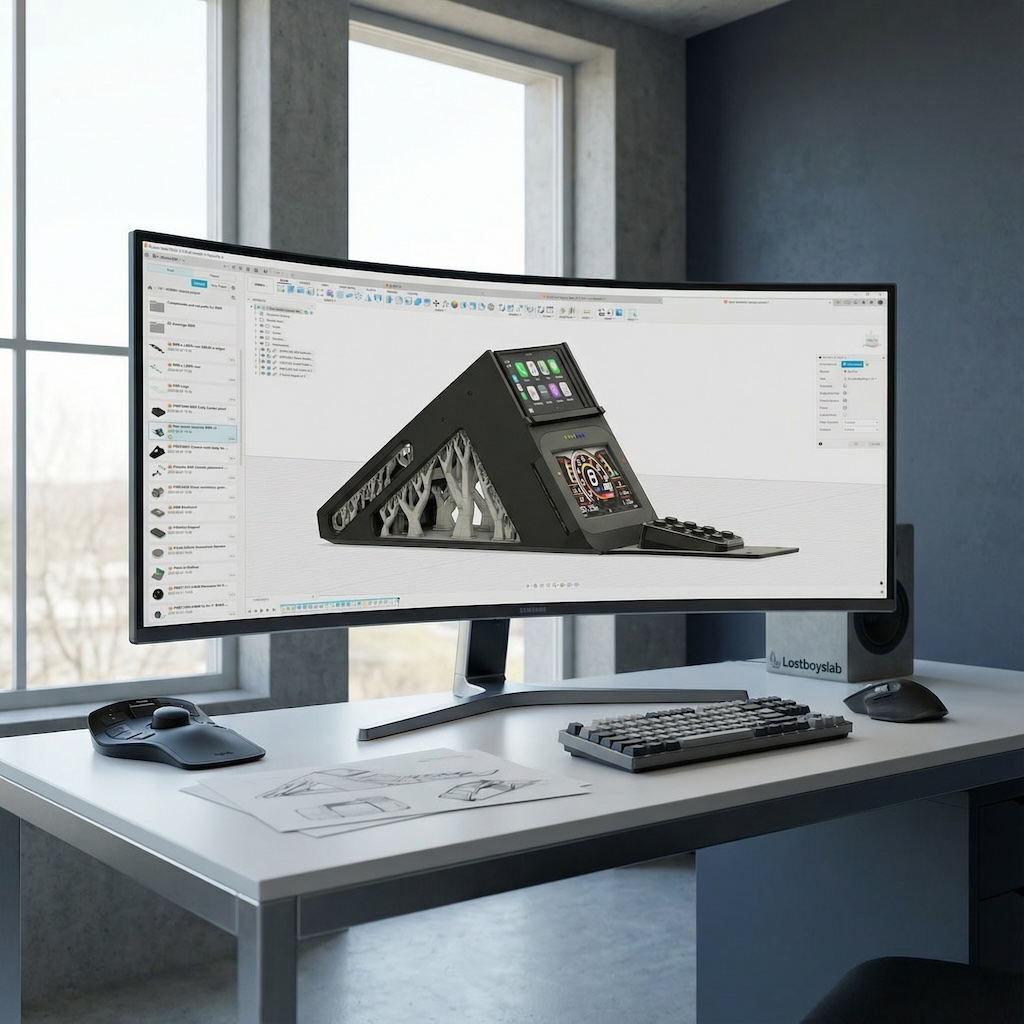
Prototypes — From Idea to Full-Scale Reality
Turning digital concepts into tangible proof. At Lostboyslab, we transform ideas into reality through rapid prototyping and additive manufacturing. With advanced 3D printing technologies and circular materials, we help you validate designs, test functionality, and refine form — faster than ever before. Our approach goes beyond small test models. We’ve built full-scale visual prototypes, such as the Electric STCC concept car based on the Volkswagen ID.3, where every exterior panel was 3D printed and assembled by hand in our facility. Whether it’s a product mock-up or a complete concept vehicle, we make prototyping faster, more sustainable, and more precise, giving your ideas real-world presence long before production.

End-to-end product development for the circular age.
Wherever you are in your product journey — from initial sketch to market-ready product — Lostboyslab provides the full pathway to production. Our multidisciplinary team combines industrial design, additive manufacturing, and digital production systems to bring your ideas to life. We manage the entire process: concept creation, design for additive, prototyping, testing, and full-scale production in our local microfactories. With deep knowledge in materials, sustainability, and digital traceability, we help brands move seamlessly from concept to circular serial production, ensuring every product is both functional and future-proof.
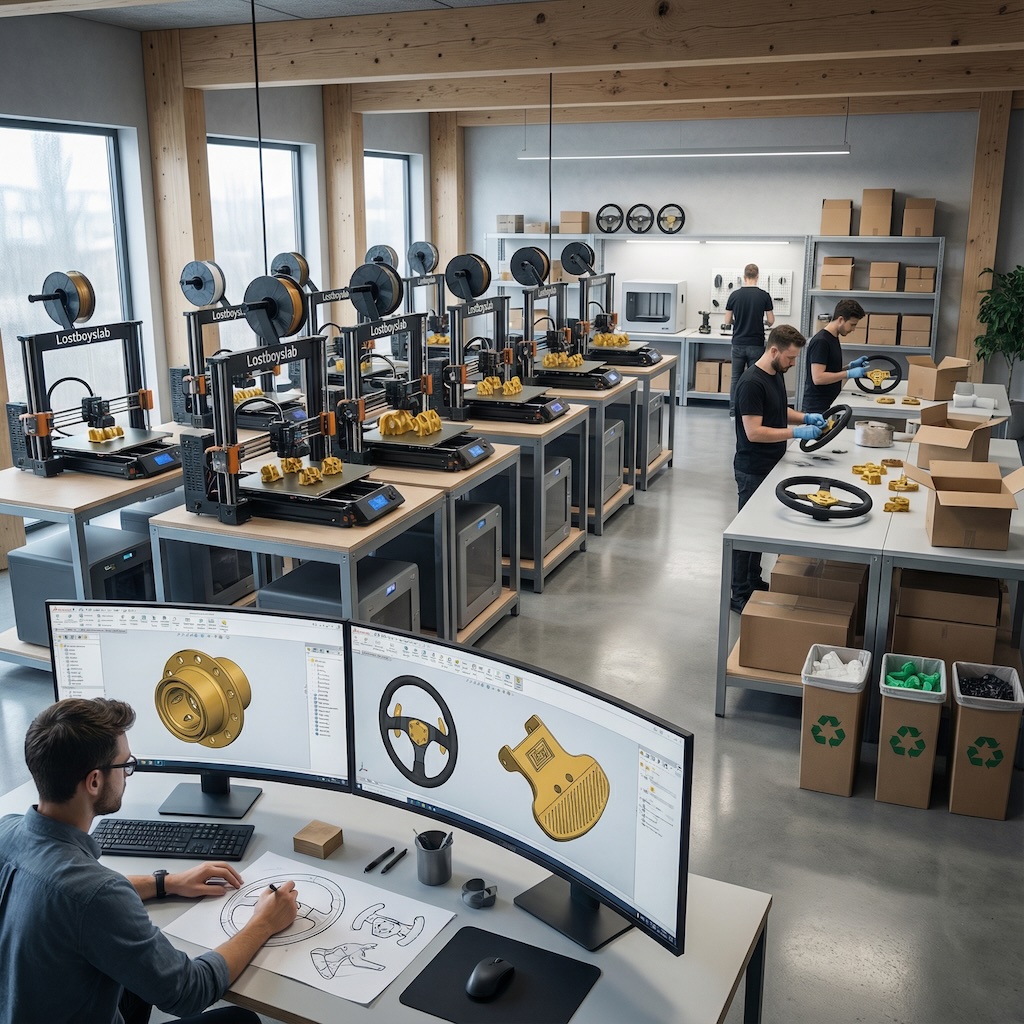
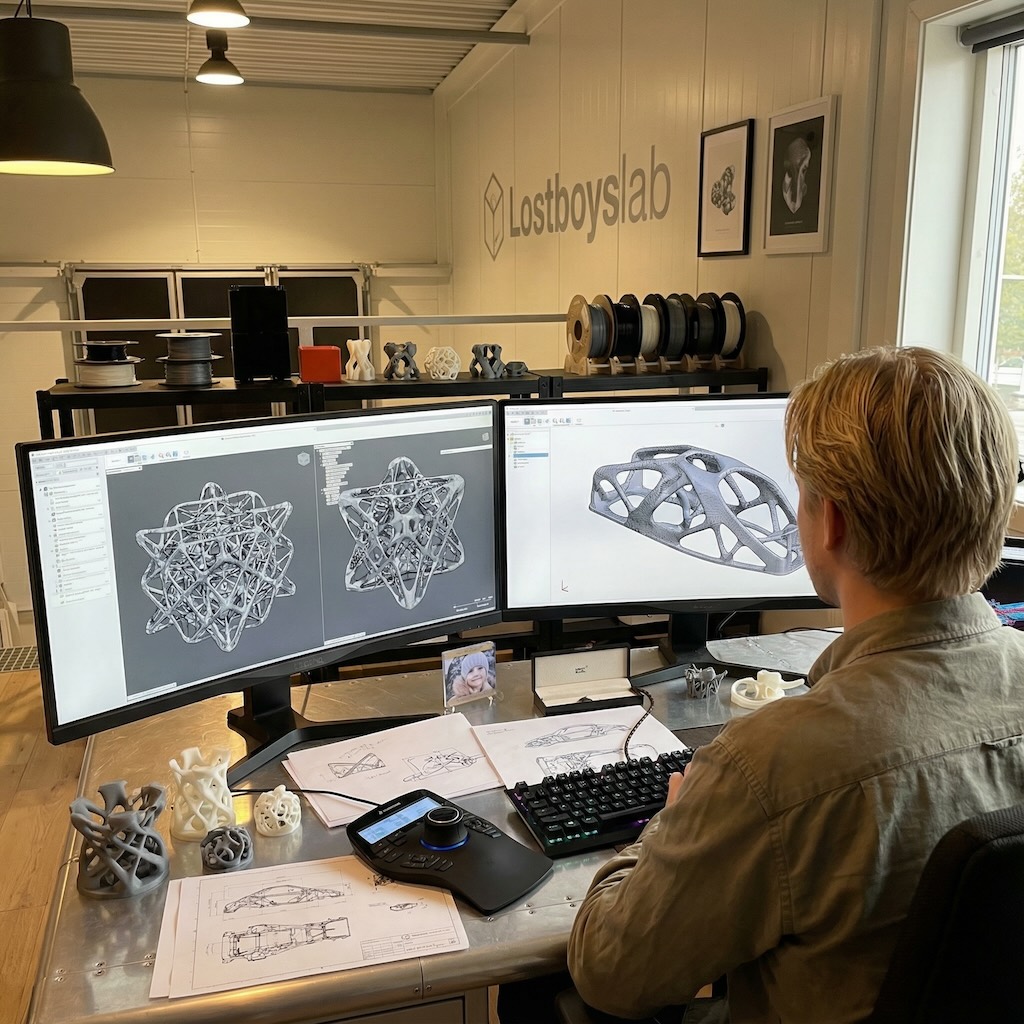


Circular Materials — Designed for Performance and Purpose
At Lostboyslab, we’ve developed a family of premium recycled 3D printing materials built for real-world products — sustainable, durable, and beautiful.
Our filaments — rPLA, rPETG, and Addnite — are engineered for professional results without compromising on performance. Used daily in our own production and trusted by designers, makers, and brands worldwide. Available in matte NCS-matched colors, they combine exceptional print quality, aesthetic precision, and a truly circular material story — made from recycled plastics, tire rubber, and industrial waste.
Sustainability meets design — and performance follows.

industry leading filament made of sustainable recycled materials


learn about
some past projects
Circular Design for the Guardian Watch
For Nordgreen’s Guardian, a watch built on sustainability, Lostboyslab created the 3D-printed packaging using second-generation recycled PLA — bio-based plastic repurposed from food containers. Each box is produced on demand in Malmö, Sweden, eliminating overproduction and keeping the carbon footprint minimal through short, local transport.Embedded with whatt.io’s Digital Product Passport (DPP), the packaging becomes a digital extension of the product — connecting materials, lifecycle, and story directly to the customer. A true example of how design, technology, and sustainability come together to redefine modern manufacturing.

Infinite Acoustics × Lostboyslab — Circular Sound Engineered
Lostboyslab partnered with Infinite Acoustics to design and build a complete Dolby Atmos HiFi speaker system, from compact lithium-powered tabletop units to the massive Crypton subwoofer. Every product is additive-first, 3D printed in local micro-factories using Addnite P10R5 — a unique hybrid material developed by Lostboyslab, made from recycled PETG, EPDM rubber, and tyres reclaimed from Swedish roads. Each speaker integrates whatt.io’s Digital Product Passport (DPP) via embedded NFC, providing full traceability, repair data, and material transparency. This project unites design, material science, and circular manufacturing to create a truly sustainable audio experience — where innovation meets acoustics in the world’s most circular speaker system.

Keep Sweden Tidy × Lostboyslab — Circular Tools for a Cleaner Future
For Håll Sverige Rent (Keep Sweden Tidy Foundation), Lostboyslab designed and manufactured a trash picker made entirely from 100% recycled rPETG.Developed from scratch and optimized for additive manufacturing, the picker combines strength, ergonomics, and sustainability — produced locally with zero virgin materials or waste.This project demonstrates how purpose-driven design and recycled materials can come together to create everyday products that directly support a cleaner, more circular society.Håll sverige rent( The Keep Sweden Tidy Foundation) needed a trash picker that was made from 100% recycle material. we design it from scratch and optimize it for 3d printing and using our rPETG, we could manufacture a strong and 100% recycle Trash picker.

Skinome × Lostboyslab — Sustainable Design Through Innovation
At Skinome, a Swedish skincare company, sustainability is a core principle that guides every decision. Across their value chain, Skinome continuously works to minimize emissions, reduce waste, and collaborates exclusively with partners who share a strong sustainability vision.Their partnership with Lostboyslab is a clear reflection of this commitment.
The Skinome Fridge Stand, produced from reused materials such as corn starch and recycled PLA plastic — repurposed from disposable food containers — embodies the brand’s dedication to circular design and responsible production.“The added benefit of partnering with Lostboyslab is their high level of innovation, which has been greatly appreciated when co-creating our fridge stand. Their flexibility and use of 3D printing allow us to produce in small batches, eliminating the need for excess inventory and waste.”
— Lydia Engholm, CEO, Skinome

Whatt.io certified partner
Lostboyslab is a certified whatt.io integration partner, embedding Digital Product Passport (DPP) technology directly into our 3D-printed parts.
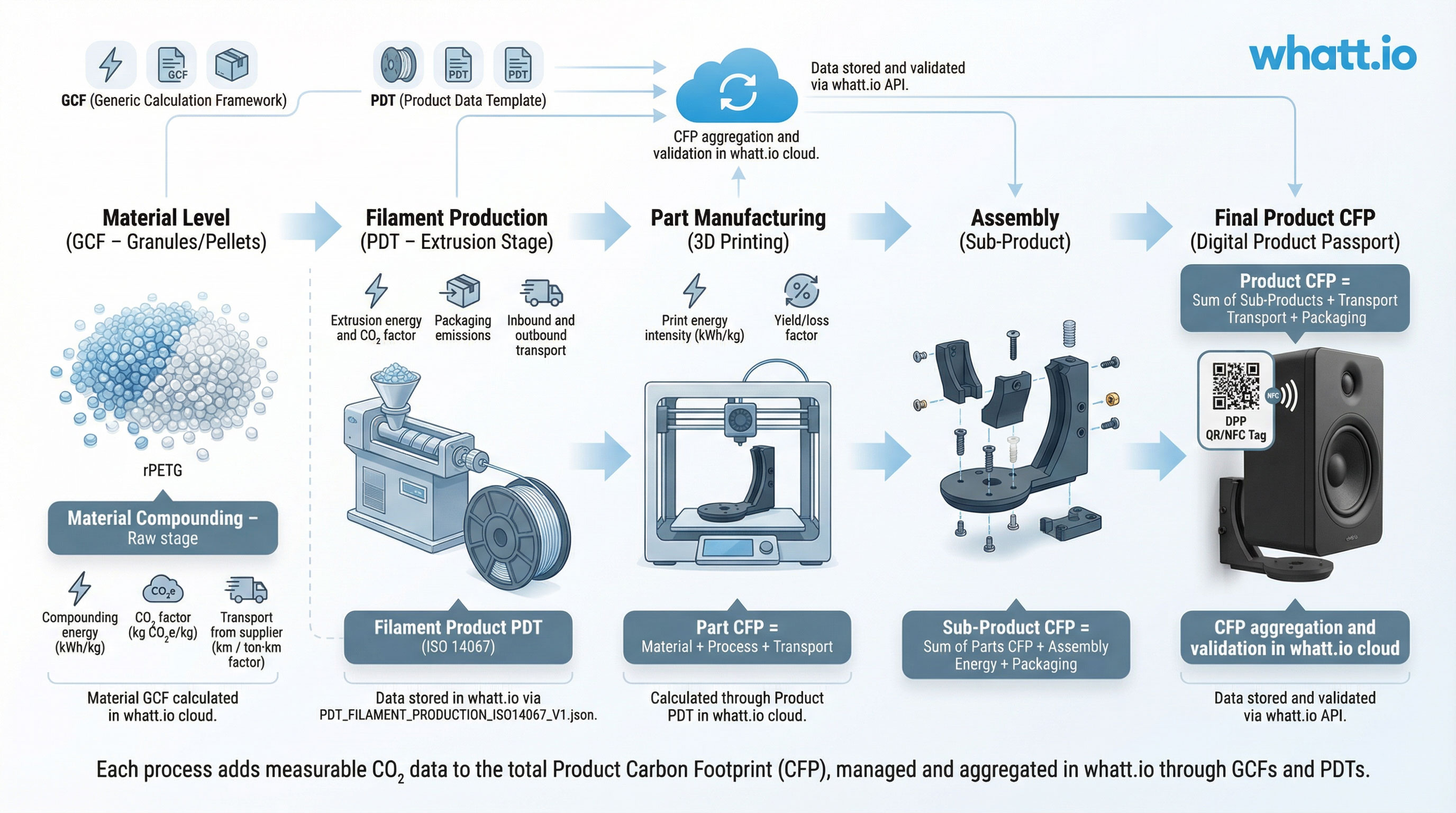
Digital Product Passport Integration for a Circular Future
By embedding NFC tags into parts during production and connecting them to whatt.io, every product we make gains its own unique digital identity — a secure link between the physical object and its complete lifecycle data.This integration enables:Full traceability of materials, manufacturing, and recycling data.Real-time lifecycle visibility, accessible via a simple smartphone tap.Enhanced circularity, ensuring transparency and compliance with upcoming EU sustainability regulations.Each DPP-enabled product becomes a living record — tracking origin, materials, emissions, and reusability.
Through whatt.io’s Tap-Without-An-App technology, the story of each product becomes instantly accessible, making sustainable manufacturing tangible, interactive, and verifiable.Lostboyslab sees the DPP not just as a compliance tool — but as a core part of our design philosophy, connecting sustainability, innovation, and digital manufacturing in every part we produce.
Contact us
contact us
Get the latest news from Scandinavia's largest AM factory

a flexible cloud platform
Complete lifecycle product data
whatt.io is our cloud platform that enables a connection between the physical product and lifecycle product data from cradle to grave. NFC enabled parts using additive manufacturing connect the actual individual part to whatt.io cloud platform, returning information about:
manufacturing
material
maintenance
assembly
recycling
spare parts
ownership

PASSIVE IoT
IoT is a network of devices that allows data about each device to be accessed, and exchanged. whatt.io:s platform enables complete, real-time visibility and control of any item linked to the Internet. IoT helps you solve your challenges, streamline your processes – and keep costs under control. A passive RFID system consists of RFID tags/labels, RFID readers and antennas, RFID middleware, and in most cases, RFID printers.

Advantages of passive IoT
The “passive Internet of Things” obtains energy from the environment. Liberated from batteries or power cords passive IoT terminals can be very low-cost and small-size. Advantages include:
Traceability
Recyclability
Product information
Digital spare parts
Assembly info
Material data
point of sale like never before
Understand customer needs with real-time analytics, set content logic based on product data, location information, previous consumer actions, and more to ensure everyone is guaranteed a relevant message.
end to end functionality
Whatt.io is a cradle to grave life cycle product information platform, connecting 3D-printing teams, sales & marketing, and end users.
Brand owner
A Team consists of account profiles (individuals) that work together in a Team. They share material, products and parts. A team would host a manufacturing facility producing parts.
A client is the brand owner and has the rights to the products and parts. A product always belong to a client (brand owner).

Team Cloud admin
Whatt.io is the connection between users, brands and manufacturers. The platform allows you to gather and store lifecycle information and make it available when needed. With 3D printing we can build a process of manufacturing that allows every single item to be unique. That means not only from mass customisation point of view, but also unique in that it will get a NFC (Near Field Communication) tag embedded inside the main part of the product.

The whatt.io framework eliminates the need for an app for the end user.
Our system uses the internal standard “tap” to open a URL that is unique to each product manufactured with whatt.io. Nothing needs to be installed on the Android or iOS phone to read the data by tapping on the part. NFC needs to be enabled in the settings for the Andriod phone, Apple iOS is always on.

The passive IoT from
cradle
to grave
In an ever-more competitive global marketplace, IoT-enabled smart manufacturing offers vastly improved visibility into assets, processes, and products. Take control of every step of the product journey by identifying, tracking and tracing products throughout the entire supply-consumer chain. IoT saves time and money by improving performance, while also gaining insights that can bolster your R&D process..
true tracEability
Today’s consumers demand transparency into how products are sourced and manufactured. what.io offers a trusted, dynamic experience including location-based end-of-product-life instructions for recycling or reselling.
NFC tag ISO 144443
NFC tags for integration during 3D printing. The 25 mm diameter NFC tag 213 (RFID) is for embedding inside a part, a slot of 26x1 mm and a pause in the G code will allow adding the chip during printing. Compatible with whatt.io product lifecycle solution and enables you to add the chip after production, on packaging or on products where integration is not possible.

NFC chip integrated inside
NFC tags for integration during 3D printing. They are developed for Lostboyslab specifically with FDM/FFF and 3D printing and with bed temperatures up to 90 degrees. Works on Prusa, Markforged etc with PLA, PETG, Onyx etc.

whatt.io Factory APP
Part of the whatt.io toolset is an Andriod and iPhone App that enables the 3D technician to quickly wake up the NFC tag and connect it to the cloud database. Choose brand and product and it will retrieve data from various sources and hard code the products tag with its now unique identity,

whatt.io cloud Admin
The cloud admin is a web based administration where all brands, products, parts and the 3D print farms with their 3D technicians are hosted. Products are added with their detailed information about product, manufacturing, material, recycling, support and spareparts that then will be connected to the physical part.

editor and unit view
Whatt.io will enable buyers of products to know where the material comes from, when and where the product is manufactured, how to assemble and disassemble it and how to repair and recycle the product.
Easily manage your product data on the whatt.io hosting platform.
The product page editor assists you in deciding what information should be displayed in the UNIT PAGE view. In the editor you can switch on and off whole sections like spare parts, introduction, assembly, material and support sections.


Live sync between editor and unit view.
The cloud admin view allows for teams to organise product information and keep track of all parts manufactured as they get a unique code for each individual Product. The admin allows for live updates, so information never grows old.
Easy maintainance/updating
Secure hosting environment
Guides and support
join us
Why use a lifecycle cloud platform, 3D printing and recycled materials for your product design and manufacturing? Why connect the parts with their own traceability data? Join us today for a limited number of development partners that will work close together in our partner program.
Smarter Products with additive
The next industrial revolution is upon us. Whatt.io is aimed to be a glue, a connection between users, brands and manufacturers to gather and store lifecycle information and make it availible when needed. With 3D printing we can build a process of manufacturing that allows every single item to be unique. That means not only from mass customisation point of view, but also unique in that it will get a NFC (Near Field Communication) tag embedded inside the main part of the product.


Need spares? - order or 3D print
With Whatt.io you have direct access to spare part information and additional features like download of parts in a digital form for printing new spares on your own. It is up to the actual brand owner to allow for different features possible in the whatt.io platform.A quick "blip" with your iPhone or Android will take you to the products totally unique home on whatt.io where your owner information and other info regarding recycling, material, warranty and assembly instructions are available.
Smart and connected - Use the NFC tags inside to drive home automation
Another benefit of the whatt.io platform and 3D printed manufacturing means, is that the Integrated NFC tag has the ability to be connected not only to whatt.io. The tags can also be used for automated shortcuts for smart home applications like Apple Home, Google Home and Alexa. The main tag is locked for whatt.io, but can be a link to home automation. Some 3D printed products have additional tags can be modified by you.

NEWSLETTER
Partner program open to apply for universities, brand and product owners, manufacturers and 3D print farms
sign upwhatt.io HQ Malmo Sweden.
Engelbrektsgatan 8
211 33 Malmö
Sweden
AM ENGINEERING & DESIGN
NICHE COMPETENCE

Lead time reduction and a powerful cost saver.
A digital warehouse enabled by local eco-systems present actual lead time reduction, responsible use of resources, and progress for the local communities. Direct access to 3D printing services reduces the need to stockpile components. Replacements needed may be 3D-printed instantly, saving both time and money.

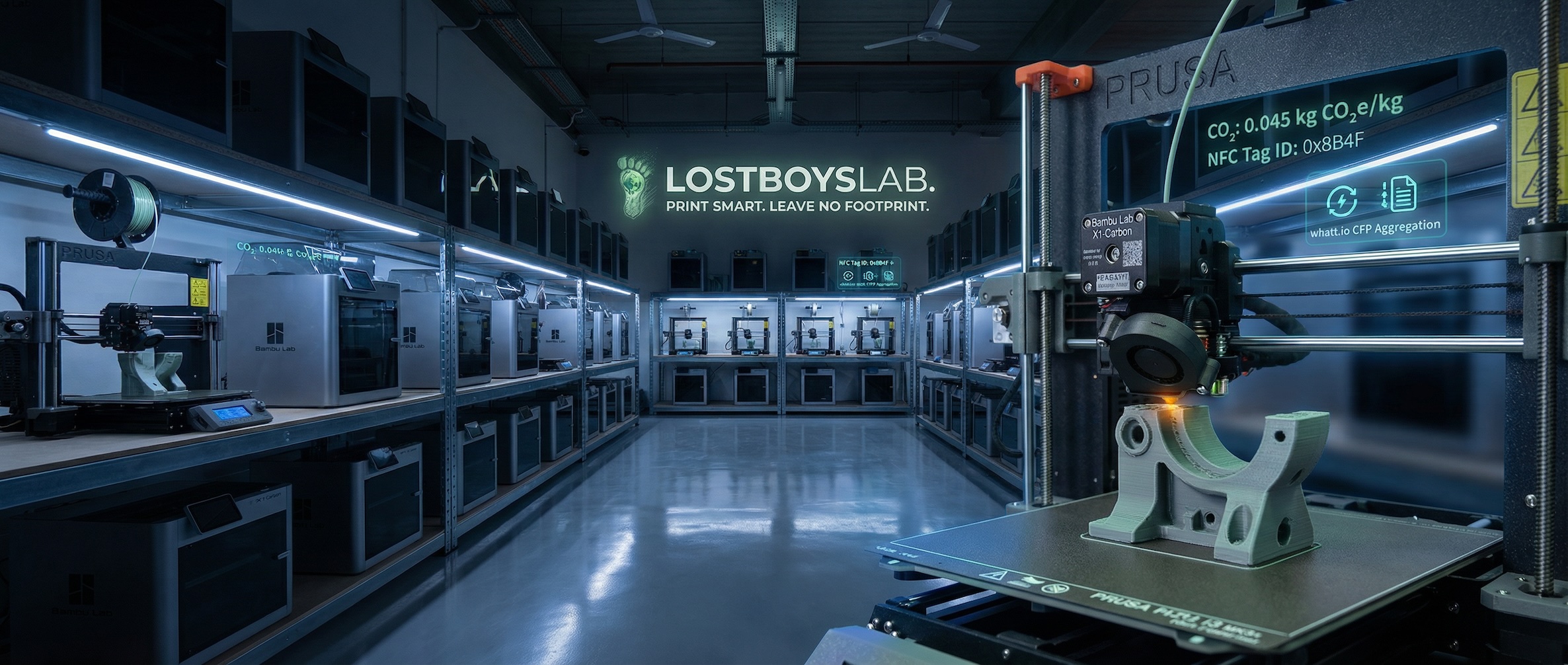
.png)


